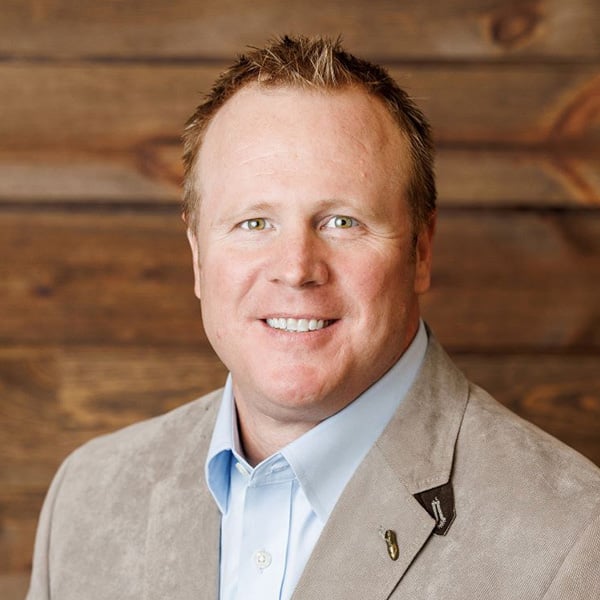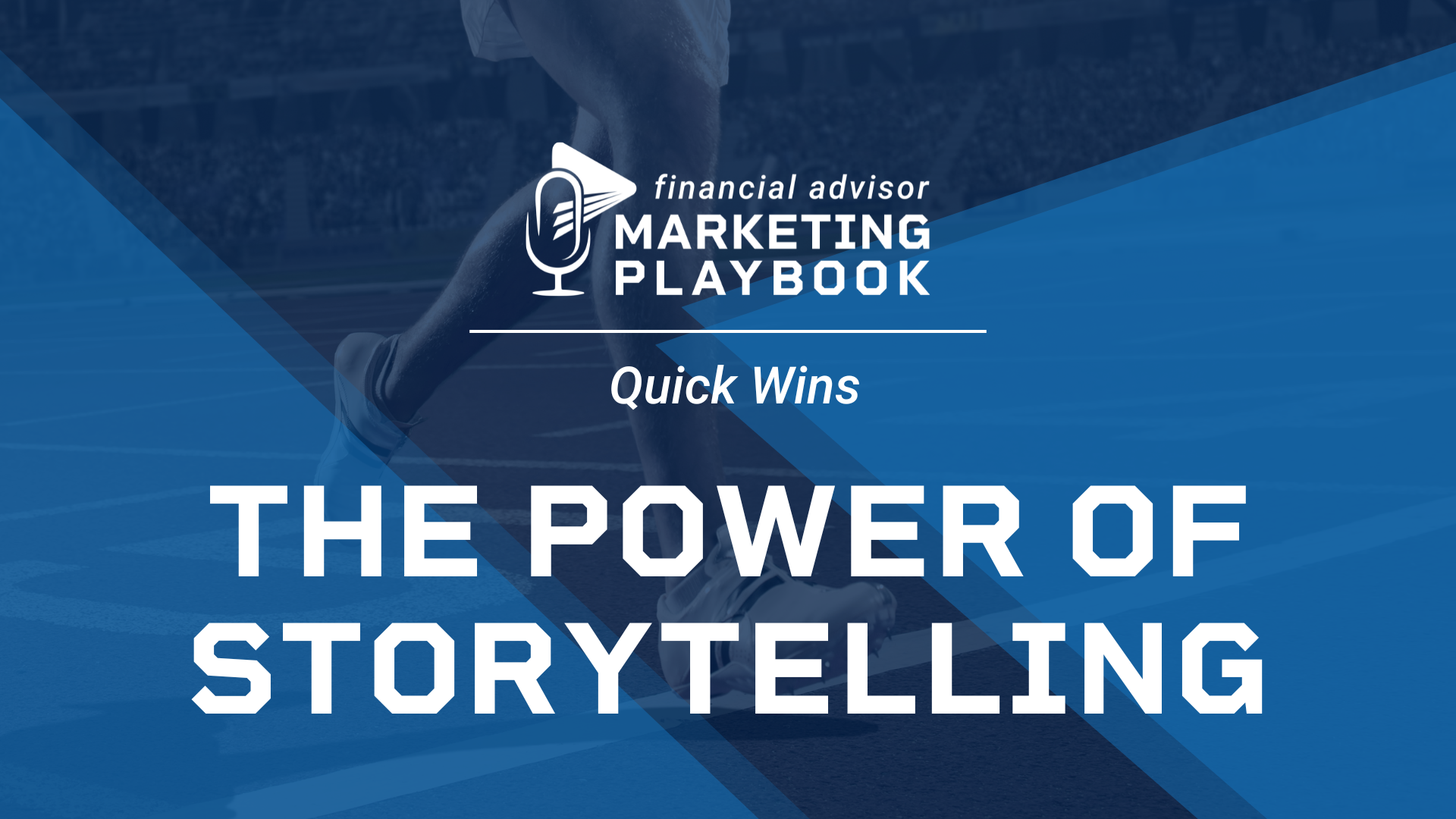A Simple Way to Connect With The Next Generation

In this episode of The Financial Advisor Marketing Playbook, Mark Mersman shares a smart, strategic way for financial advisors to turn the often-overlooked trusted contact form into a powerful marketing opportunity. By reframing this regulatory requirement as a chance to connect with the next generation—especially the “alpha child” often listed as a trusted contact— financial advisors can strengthen multi-generational relationships, reduce future asset attrition, and position themselves as a family’s long-term financial resource. Learn how to proactively educate clients and reach out to trusted contacts in a compliant yet relationship-building way. It’s important to communicate wealth values to the next generation and help clients engage adult children in financial planning. If you're looking for creative marketing ideas, tools to enhance client retention, and ways to future-proof your practice, this episode is a must-watch.
Summary:
Mark Mersman opens his segment with a story from a recent consulting session. An advisor had been frustrated by a seemingly tedious form: the trusted-contact sheet custodians require during onboarding. Most clients signed without issue, but a few resisted sharing another name, and the step felt like an added compliance drag. Mersman pauses on that annoyance because it masks a business opportunity advisors often overlook.
He clarifies the form’s purpose. A trusted contact is someone the firm may call if warning signs appear—elder exploitation, cognitive decline, unreachable clients, or suspicious activity. It is not a power of attorney; it confers no trading authority. Its limited, protective scope makes it non-threatening for clients and essential for regulators. When properly framed, the conversation reassures the client that the advisor is serious about safeguarding their interests.
Next, Mersman highlights the marketing upside. Within most families there is an “alpha child,” the son or daughter who manages bills, coordinates medical appointments, and shepherds big decisions. That person is usually the first name listed as trusted contact. With client permission, the advisor can reach out, introduce himself as the parents’ financial professional, and explain the narrow circumstances in which a call might occur. What begins as a compliance courtesy becomes a warm entrée to the heirs.
Several advantages follow. Advisors who connect with the alpha child early sharply reduce asset flight after the primary client’s death. The child influences siblings and even the parents on service decisions; earning that trust can lead to referrals and multi-generational planning engagements. The contact also gives the advisor a clearer picture of family dynamics, improving financial and estate recommendations.
Mersman describes how the consulting-session advisor implemented the idea. The firm added one micro-step to onboarding: after explaining the form, they ask the client for consent to send a brief video and letter to the chosen contact. That evergreen message thanks the person for serving in a protective role, outlines when a call might occur, and invites questions. For existing clients, staff scheduled phone calls and emails to update records and perform the same introduction.
Key talking points include reminding clients they may change or add contacts at any time, stressing that the designation grants no transaction power, and underscoring how it helps prevent fraud—an escalating threat to older Americans. The advisor’s outreach yielded more than a dozen substantive conversations with children of top clients, two of whom booked meetings to discuss their own retirement goals. What began as “extra paperwork” turned into a relationship pipeline.
Mersman encourages viewers to design a branded trusted-contact template, store copies in the CRM, and view slow periods as chances to standardize the process. He also suggests recording a two-minute explainer video so every introduction feels personal yet scalable. An additional twist is urging clients to name more than one contact, which both broadens protection and multiplies future touchpoints for the advisor.
He also points out operational benefits. Because FINRA recommends naming trusted contacts, documenting them for every account positions the firm well during exams and prevents deficiency letters. A standardized intake sheet feeds CRM fields, and the explainer video can sit in the client portal, demonstrating that the practice is proactive about protection. Even if the contact never gets a call, knowing the advisor took that precaution boosts confidence and strengthens the service relationship.
Mersman closes with a simple directive: turn lemons into lemonade. Mandatory forms and regulatory requirements will always exist; the competitive edge lies in transforming them into value-adds. The trusted-contact discussion enhances compliance, reinforces the advisor’s role as protector, and unlocks access to the next generation—ensuring assets stay under guidance when wealth ultimately transfers. In short, a form once viewed as a nuisance can become a cornerstone of a multi-generational retention strategy where everyone benefits. Proactive details like these differentiate advisors in markets.
Transcript:
Mark Mersman, Chief Marketing Officer at USA Financial - So I want to share a quick story. This happened a few months ago and was in a consulting session with an advisor. And we were talking about different challenges that their firm had and specifically kind of discussing paperwork. And one of the forms that we were discussing was the trusted contact form. And it was interesting because there was a little bit of grumbling. I guess I'll use that term with this advisor around, you know, sometimes it can be a little bit of a pain here or there.
Occasionally client, doesn't always want to share certain information and we started to talk about the trusted contact form and he said, you know, most of the time it's never an issue and they go through the motions. They'll get the info. And if you're not familiar with what I'm talking about, I'm sure that you are, but the trusted contact form is essentially a form that financial institutions oftentimes will require for you to complete. And essentially what they're looking for is they're trying to get a sense from that client who a trusted contact is, a person that would be designated by the client that financial advisor or the institution may contact in certain situations, things like concerns about financial exploitation, signs of diminished capacity or cognitive decline, perhaps an inability to reach the client or maybe they're suspicious or there's unusual account activity. And it's interesting because throughout our conversation, what came of it was, you know, let's turn what might be perceived by some as a negative into a marketing opportunity.
And, you one of the things that we talk about a lot with advisors is reaching the next generation. You know as your clients age the importance of trying to retain those assets before they get passed on to kids, or as they get passed on to kids and ultimately trying to create and establish some relationships with the children of your clients so that those assets stay in house with you as well as gives you a chance to build relationships with the clients. So what we talked about and ultimately what this advisor has now done and put into practice is as a part of the process of onboarding a new client. And in some cases, you might want to go back to your existing clients and go through this process, but, it's a part of the process that once we go through that education of who a trusted contact is.
We'll create a video that explains the nature of the trusted contact, but we want to have a reach out ahead of time. And obviously we want to get permission from the client to do so, but have a reach out ahead of time to introduce ourselves as the financial advisor who works with you, your parents or your friend or whomever, know, whatever that relationship is with the trusted contact and explain their role, explain the role of the trusted contact, why it's important, we're trying to protect fraud, elder abuse, crisis communication challenges. You can speak to some of the regulatory compliance components that are associated with it and really turn it into a positive outreach for you. Oftentimes what you will find from the trusted contact is, you know, in many cases and many families, that is the alpha child. It might be the one that will ultimately take control of settling the estate.
Oftentimes that's the person that your client is gonna lean on for certain financial decisions or a second set of eyes on things. In many cases, that person might be one of the most important people or persons in your client's life. And so the trusted contact form actually turns into a positive for you and a chance for you to connect with that next generation. Or perhaps, you know, it's going to be a sibling of a client or whatever it might be to start to form a relationship and, you know, get them into your world to explain who you are, what your role is with, with their loved one and use that and leverage that as an opportunity to build that, that relationship there. So it's really simple. I think it's very important as you go through the education process to explain to them exactly what is involved with that role, understanding that, you know, a trusted contact is not a power of attorney. There's only limited and specific situations that would really require you as the advisor to reach out. And it is more of a preventative tool and that clients really can change or remove the trusted contact that they have on file at any time, but understanding and explaining to the existing client, the role of the trusted contact, there can certainly be more than one. And you may, as an advisor, want to encourage that so that you have other ways to connect with that next generation, but also just having different relationships from within that family so that you can do the best job for your client in the event that something like this were to happen that would require reaching out and connecting with a trusted contact. Certainly use that as an opportunity to start to bridge that conversation and that, you ultimately that relationship with the next generation. So I would encourage you, you might even want to create a trusted contact form that is specific to your brand, your firm that you just keep on file inside of your office.
If you don't have that, maybe you want to make that as a marketing outreach opportunity for you during a slow time where you try to mop that up and get trusted contacts for every client that is a client of your firm. So trying to take what sometimes might be perceived as a negative or just an inconvenience for you and leverage it, turning it into a positive opportunity for you both. You know, I think it's a great thing for your client. I think it's a great thing for the trusted contact to realize, all right, this is the financial advisor. In the event that I get a call, here's what I should expect and what exactly is inbounds and what's out of bounds in terms of their role as a trusted contact. And then for you as the advisor, it gives you that next connection point or another connection point, perhaps a first connection point with that next generation or somebody that your client truly cares about and trusts.
So leverage that opportunity. Turning lemons into lemonade there. The trusted contact can be an awesome opportunity for you to use from a marketing standpoint. So cheers to that. Enjoy your day.
--
The Financial Advisor Marketing Playbook is a podcast/video series for high-performing financial planning professionals that are committed to improving their craft, helping their clients, and growing their business. Hosted by Mark Mersman, Chief Marketing Officer at USA Financial, this series contains a wide variety of content – from quick win ideas to long-form interviews, each episode provides actionable marketing ideas and insights that can be implemented easily into your practice. From digital marketing to traditional direct-response marketing, each episode delivers straight-forward and engaging content that any financial professional can use to improve their bottom line and grow their practice.
Financial Advisor Marketing Playbook is also a podcast! Subscribe today via Apple Podcasts or your preferred podcast listening service for easier on-the-go listenin
Author Info

Mark Mersman is the Chief Marketing Officer at USA Financial, joining the firm in 2004. He has held numerous roles within the company prior...
Related Posts

The Power of Storytelling: 3 Essential Stories Every Financial Advisor Needs
In this episode of Financial Advisor Marketing Playbook, Mark Mersman reveals how storytelling can transform your marketing and client relationships. Learn the three foundational stories every advisor needs: your origin story to build trust, your client transformation story to demonstrate results and empathy, and your philosophy story to define your beliefs and differentiate your brand. Discover practical tips for crafting these narratives and integrating them into your website, meetings, and marketing strategy.

Building a Client-Centered Practice: Insights from Duncan MacPherson & Pareto Systems
In this episode of the Rare Advisor, host Aaron Grady sits down with Duncan MacPherson of Pareto Systems to unpack the “Always On” client experience from The Blue Square Method—showing financial advisors how to move from personality-driven to process-driven, scalable firms. You’ll learn the four quadrants (Onside, Onboard, Ongoing, Onward), why a documented fit process and onboarding sequence create professional contrast, how the 12-4-2 service model competitor-proofs relationships, and why systematizing moments of truth builds advocacy and referrals. We cover turning know-how into intellectual property (playbooks/SOPs), becoming “fee-worthy” and referable, leveraging the Pareto principle for AAA clients, and shifting from B2C to B2B growth.

Is Your Brand Working for You?
In today's competitive landscape, your advisory firm is more than just a name. It's your promise, your reputation. But how do you know if your brand is working for you, attracting the right clients, and communicating your value effectively? The answer lies in a brand audit.

The Power of Storytelling: 3 Essential Stories Every Financial Advisor Needs
In this episode of Financial Advisor Marketing Playbook, Mark Mersman reveals how storytelling can transform your marketing and client relationships. Learn the three foundational stories every advisor needs: your origin story to build trust, your client transformation story to demonstrate results and empathy, and your philosophy story to define your beliefs and differentiate your brand. Discover practical tips for crafting these narratives and integrating them into your website, meetings, and marketing strategy.

Building a Client-Centered Practice: Insights from Duncan MacPherson & Pareto Systems
In this episode of the Rare Advisor, host Aaron Grady sits down with Duncan MacPherson of Pareto Systems to unpack the “Always On” client experience from The Blue Square Method—showing financial advisors how to move from personality-driven to process-driven, scalable firms. You’ll learn the four quadrants (Onside, Onboard, Ongoing, Onward), why a documented fit process and onboarding sequence create professional contrast, how the 12-4-2 service model competitor-proofs relationships, and why systematizing moments of truth builds advocacy and referrals. We cover turning know-how into intellectual property (playbooks/SOPs), becoming “fee-worthy” and referable, leveraging the Pareto principle for AAA clients, and shifting from B2C to B2B growth.

Is Your Brand Working for You?
In today's competitive landscape, your advisory firm is more than just a name. It's your promise, your reputation. But how do you know if your brand is working for you, attracting the right clients, and communicating your value effectively? The answer lies in a brand audit.

